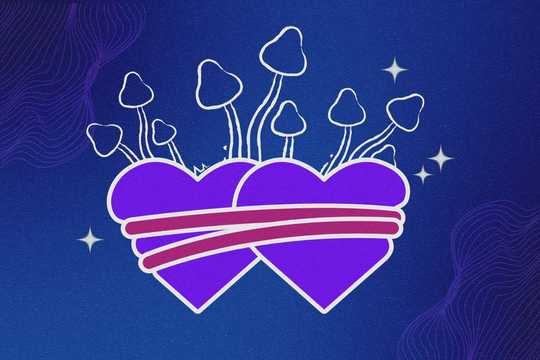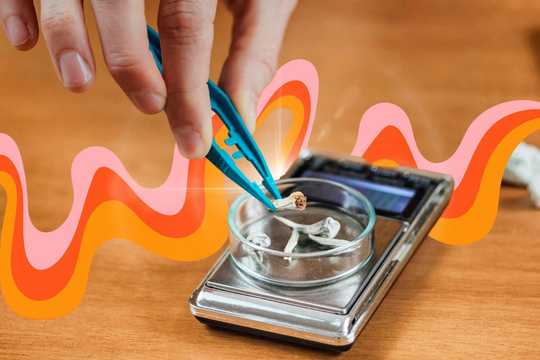What’s it like to be a psychedelic therapist? This exciting role is still taking shape within the new model of psychedelic medicine. Learn about this fascinating cutting-edge specialty in our blog on the therapist’s role in psychedelic medicine.
Psychedelic Support helps prepare clinicians with educational resources that equip them to practice effectively in the field. But what if you’re still figuring out whether this role is for you? Since psychedelic medicine is evolving so rapidly, it can be hard to see if you fit in. You may be wondering how it’s possible to even practice psychedelic therapy when many substances are still illegal.
It’s true that most psychedelics are still illegal in the United States. We’re seeing changes in some states and cities. It’s possible to legally practice ketamine therapy in all states, and we are anticipating similar changes for other psychedelics soon. After remarkable outcomes in patients with PTSD, MDMA has begun the journey towards commercialization and could become FDA-approved as early as 2023.
Some states and countries have already begun moving in this direction. Oregon will facilitate access to psilocybin sessions under their new bill starting in 2023. Canada’s Special Access Policy will allow physicians to request experimental psychedelic substances on behalf of their patients. We believe that these moves to increase access are just the beginning of a broader shift towards evidence-based psychedelic legalization.
Even though these substances aren’t all legal yet, there is a growing need to train as many therapists and psychedelics clinicians as possible. Once psychedelic medicine is legal, we want expanded access – allowing everyone who can benefit from psychedelics to receive therapy.
To do this, the Multidisciplinary Association for Psychedelic Studies (MAPS) projects that we’ll need to train over 40,000 psychedelic therapists in MDMA therapy alone. In the next five years, there will be a massive need for psychedelic therapists and other members of the co-therapy team.
But who can be a part of this movement by becoming a psychedelic therapist? What will it be like to work in this field? Let’s answer these questions and more about the therapist’s role in psychedelic medicine.
Follow your Curiosity
Sign up to receive our free psychedelic courses, 45 page eBook, and special offers delivered to your inbox.Who Can Become a Psychedelic Therapist?
FDA approvals for psychedelic substances will likely come with caveats about who can perform psychedelic therapy. It’s possible that only medical providers and clinical psychologists will be allowed to supervise sessions where patients are engaged in psychedelic experiences.
On the other hand, this would severely limit access to sessions. Study sponsors have argued that other professionals such as therapists, nurses, and even clergy members could be active participants in the co-therapy team.
Psychedelics have proved to carry little physical risk, and have even been associated with positive lifestyle choices.[1] Since the physical risk in clinical settings is relatively low compared to other psychiatric treatments, it makes sense that non-medical personnel would be able to supervise sessions.
This is an ongoing discussion within the psychedelic medicine community. We believe that psychedelic therapists will likely have prior credentials and experience in mental health integration.
Therapists will likely need to be trained and licensed before pursuing further education in psychedelic medicine. These professionals have at least a graduate degree, often in Clinical Social Work or Counseling. Psychedelic therapists may have one or more of the following credentials:
- Licensed Clinical Social Worker (LCSW)
- Licensed Professional Counselor (LPC)
- Licensed Clinical Professional Counselor (LCPC)
- Licensed Clinical Mental Health Counselor (LCMHC)
- Licensed Marriage and Family Therapist (LMFT)
- Licensed Clinical Psychologists (PhD, PsyD)
After credentialing, further psychedelic-specific training will likely be required to practice therapy. Therapists will probably have to complete didactic education and supervised hours before being allowed to practice psychedelic therapy unsupervised.
MAPS Public Benefit Corporation currently offers training for MDMA therapy in preparation for commercialization. It’s likely that all psychedelic therapists will need to go through this course or similar training before they will be allowed to practice.
There may also be space for other professionals in the co-therapy team. Coaches and facilitators could also assist with integration and harm reduction. Psychedelic nurses will likely assist with patient safety and advocacy. They may become therapists with additional training and education. Psychedelic physicians will play a vital role in diagnosing and prescribing psychedelics for patients.
What Does a Psychedelic Therapist Do?
Psychedelic therapists combine their expertise in talk therapy with powerful psychedelic experiences. By assisting patients before, during, and after these experiences, psychedelic therapists help patients achieve a new level of mental health.
Psychedelic therapists work with patients suffering from a range of diagnoses and ailments. For instance, ketamine therapists often work with patients who want help with Treatment-Resistant Depression (TRD), Post-Traumatic Stress Disorder (PTSD), anxiety, chronic pain, and more.
Psychedelic therapists start by establishing a baseline of rapport with their patients. Therapists build a working relationship by delving into patients’ trauma, established diagnoses, and goals for treatment. It’s important to get a full patient history before recommending psychedelic therapy, which therapists may establish during initial sessions.
These initial sessions will also likely include in-depth education on the psychedelic experience. Patients need to know what to expect in order to feel safe during their active sessions.
During sessions where patients are under the influence of psychedelic substances, therapists will help guide them through their experiences. Psychedelics can create intense emotions in patients. Therapists must be able to alleviate anxiety and mitigate any negative experiences they may have.
Depending on the substance being used, patients may go through several separate psychedelic sessions. The number and frequency of sessions affects treatment efficacy and outcomes.
For instance, five ketamine infusions may be spaced out over a period of weeks to several months to be more effective than midazolam for depression.[2] Decisions about treatment frequency will likely be made by the prescribing doctor and the therapist, if one is undergoing ketamine-assisted psychotherapy.
You’ve probably gathered that psychedelic therapy will be different from any other therapy model. While traditional counselors and therapists don’t tend to manage medications, psychedelic therapists will work closely with doctors and patients during their substance experiences. This experiential model is brand-new within mental health treatment.
Psychedelic therapists will have special training in a few areas. Check out these specific goals that differentiate mind-manifesting therapists from other specialties.
Working in Non-Ordinary States of Consciousness (NOSCs)
Psychedelic experiences, sometimes called NOSCs, call for a tailored approach to therapy.
Psychedelic therapists will use strategies from mindfulness, psychodynamic therapy, and psychedelic-assisted therapy to give their patients the most profound experiences possible. Psychedelic therapists have to practice with a non-judgemental attitude, being open to experiences their patients may have.
Guiding patients through NOSCs is unique to psychedelic therapy. It’s a responsibility that shouldn’t be taken lightly. While traditional psychotherapy relies on a functioning ego, patients may lose this sense of self during sessions. Therapists must be able to adapt to the emotions that can result from “ego death” and help patients integrate this experience.3
Psychedelic Harm Reduction
The phrase “do no harm” may sound like a no-brainer for many clinicians, but harm reduction means something totally new within psychedelic medicine.
The harm reduction model values a patient’s right to make decisions for themselves rather than being told how to proceed. Harm reduction also involves helping patients gain resources to help them set helpful goals. This non-directive approach empowers patients to be their own decision-makers.
Rather than condemning psychedelic substances, the harm reduction model points out that people should be able to make educated choices for themselves. Harm reduction practices necessitate a non-judgemental approach to substances, rather than preaching abstinence.
Under the harm reduction model, psychedelic therapists have a duty to treat patients with flexibility, honesty, warmth, and respect. Unlike in other models, harm reduction teaches a non-authoritative and non-hierarchical relationship between therapist and patient.[3]
Harm reduction is a vital tool in any psychedelic therapist’s tool belt. Learn more about psychedelic harm reduction in our free course.
Psychedelic Integration
The important work of experience integration is in the hands of the psychedelic therapist. This work happens after psychedelic sessions – helping patients understand their experiences and create a new path forward.
The unfolding process of integration may continue for years after a psychedelic experience. Therapists need to help patients process the emotions around their experiences, even when those emotions are negative. “Bad Trips” are a risk, and require clinicians to adapt so that patients can still experience positive outcomes.
Certain persisting symptoms may signal to the therapist that more support is necessary. Therapists must be able to help patients through symptoms such as insomnia, anxiety, disorientation, and depression if they occur. Clinicians also need to be able to distinguish between temporary, benign psychological discomforts and psychosis.[3]
Start Your Journey to Become a Psychedelic Therapist
If you’re interested in becoming a psychedelic therapist, here’s some great news: there will be a massive need for you in the coming years. You can help bridge the gap for thousands of people who have been underserved by the existing mental health paradigm.
If you’re looking for resources to help you begin this journey, you’ve come to the right place! Psychedelic Support offers courses, community connections, and expert facilitation for every stage of your education. Check out our free courses page to access practical guides, psychedelic terminology, harm reduction principles, and more.
References:
- Simonsson O, Sexton JD, Hendricks PS. Associations between lifetime classic psychedelic use and markers of physical health. J Psychopharmacol. 2021 Apr;35(4):447-452. doi: 10.1177/0269881121996863. Epub 2021 Mar 9. PMID: 33719688; PMCID: PMC8056715.
- Shiroma, P.R., Thuras, P., Wels, J. et al. A randomized, double-blind, active placebo-controlled study of efficacy, safety, and durability of repeated vs single subanesthetic ketamine for treatment-resistant depression. Transl Psychiatry 10, 206 (2020). https://doi.org/10.1038/s41398-020-00897-0
- Gorman, I., Nielson, E. M., Molinar, A., Cassidy, K., & Sabbagh, J. (2021). Psychedelic harm reduction and integration: A transtheoretical model for clinical practice. Frontiers in Psychology, 12. https://doi.org/10.3389/fpsyg.2021.645246






